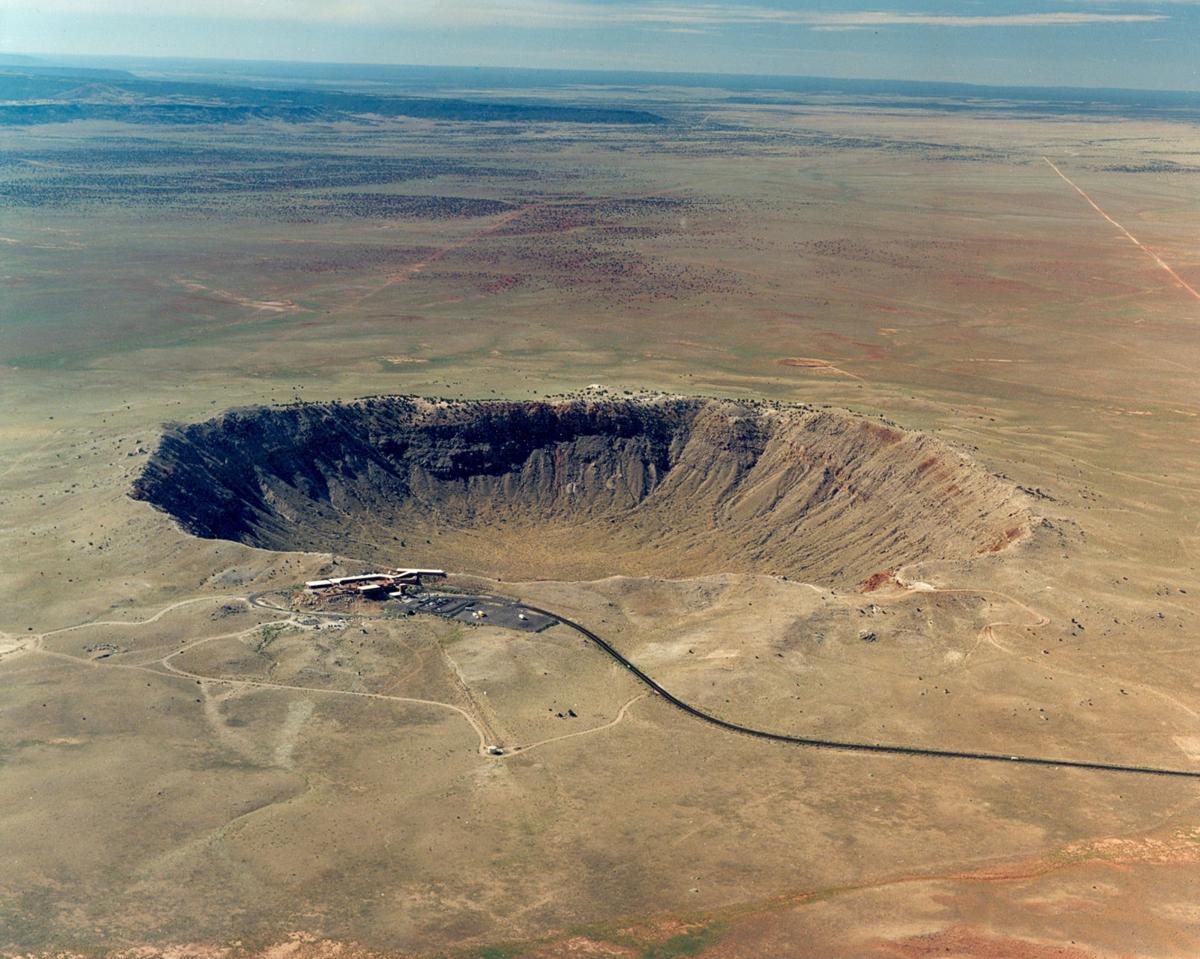Saguaros, a giant canyon, dry heat and asteroids?
When most people think of Arizona, asteroids aren’t typically the first thing to come to mind.
The Grand Canyon state, however, is home to some of the latest work in asteroid research and detection, not to mention the best-preserved meteor crater in the world.
In honor of World Asteroid Day on Sunday, June 30, here’s a break down of some of Arizona’s most out-of-this-world asteroid related facts.
The best-preserved impact crater
The Meteor Crater, located east of Flagstaff, is said to be the best-preserved impact crater in the world thanks to Arizona’s dry climate. At nearly one mile across and 550 feet deep, the crater was created 50,000 years ago when an estimated 160-foot iron asteroid slammed into the Colorado plateau. The explosion was estimated to be equal to 10 megatons of TNT on impact.
You can touch the meteorite that created the Meteor Crater outside the Flandrau Science Center and Planetarium in Tucson.

This is an artist’s concept of the OSIRIS spacecraft taking a sample of asteroid RQ36.
OSIRIS-REx and Bennu
NASA’s OSIRIS-REx mission, led by the University of Arizona, is the first spacecraft in the United States designed to return a piece of an asteroid to Earth. After a two year journey, OSIRIS-REx arrived at an ancient near-Earth asteroid called Bennu in December 2018.
Since its arrival, observations from the spacecraft revealed the asteroid interacted with water at some point in its history. This finding will help scientists discover more about the origins of water and life in the solar system.
On December 31, 2018, OSIRIS-Rex entered orbit around asteroid Bennu at a distance of about a mile, setting two records for the closest orbit of a planetary body by any spacecraft and the smallest body ever orbited by a spacecraft.
OSIRIS-Rex is now heading into the next phase of its mission, entering an even closer orbit around Bennu to evaluate potential sample sites. The spacecraft is scheduled to collect a sample from the surface in July 2020, and will return to Earth in 2023.

The Catalina Sky Survey used telescopes on Mt. Lemmon, above, and Kitt Peak to discover 20,000 asteroids.
Detecting asteroid threats
Catalina Sky Survey and SPACEWATCH at the UA have discovered nearly half of the 20,000 near-Earth asteroids that threaten the planet using telescopes on Mount Lemmon and Kitt Peak.
Catalina Sky Survey is a NASA funded project based at the UA Lunar and Planetary Laboratory that is dedicated to the discovery and tracking of near-Earth objects. SPACEWATCH, a group founded by UA professors in 1980, also serves a similar mission and has two telescopes located on Kitt Peak in Tucson.

Richard F. Caris Mirror Lab staff review the glass placed in the mold, checking for space for the last view pieces of glass for Giant Magellan Telescope mirror 5. [L-R Randy Lutz, Britt Kayner, Pat Peak]
Telescopes designed with asteroids in mind
Next generation asteroid hunting telescopes are being built in Arizona. The optics for the Large Synoptic Survey Telescope, which is currently being built in Chile, were made at the Richard F. Caris Mirror Lab at the UA. LSST is a project that will conduct a 10-year survey of the sky and deliver thousands of images and data that will ultimately be available for public use.
The UA is also home to the NEOCam project, a space-based infrared telescope which will search for hazardous asteroids from space.
Psyche mission
The Psyche mission led by Arizona State University will visit a metal-rich asteroid, also called Psyche, and is set to launch in the summer of 2022. The Psyche spacecraft is projected to arrive in 2026 using low thrust propulsion and will spend 21 months mapping and studying the asteroids properties.
Asteroid redirection
NASA’s Double Asteroid Redirection Test, or DART, mission will crash into the moon of a binary near-Earth asteroid called Didymos to test asteroid deflection technology. Astronomers at Northern Arizona University are studying this asteroid ahead of the DART spacecraft’s collision with Didymos in 2022.








